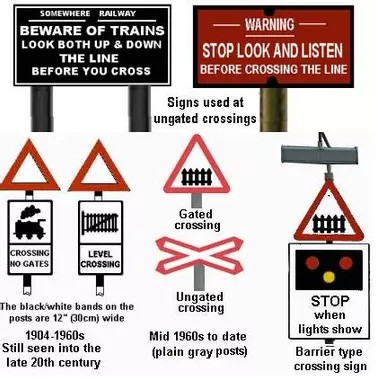level crossing
A level crossing is where a railway crosses a road or right of way on the level; that means without the use of a tunnel or bridge.
- Passive crossings – there is no warning of a train’s approach other than by the train driver who may use the train horn. It is the users responsibility to stop, look and listen to check whether it is safe to cross.
- Active crossings – the user is warned of a train’s approach through closure of gates, barriers, warning lights and/or alarms. The operation of an active crossing can either be automatic or manual (by a rail operator).
The director of the UK Railway Inspectorate commented in 2004 that “the use of level crossings contributes the greatest potential for catastrophic risk on the railways.” (https://en.wikipedia.org/wiki/Level_crossings_in_the_United_Kingdom#cite_note-2) The creation of new level crossings on the national network is banned (the exception being reopening unavoidable crossings on new/reopening railway lines, and on heritage railways), with bridges and tunnels being the more favoured options.
signs and signals for level crossings

| Previous | Next |
|---|---|
| 01 Sign Priority | 03 00 Lines |